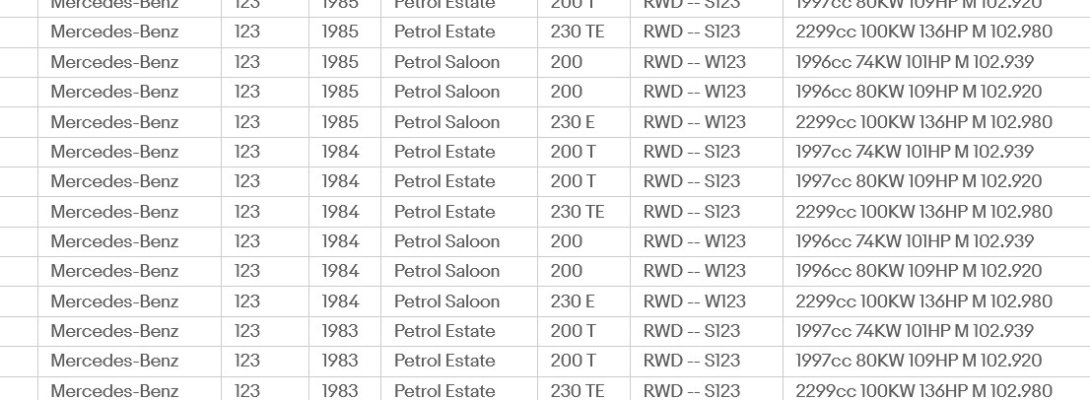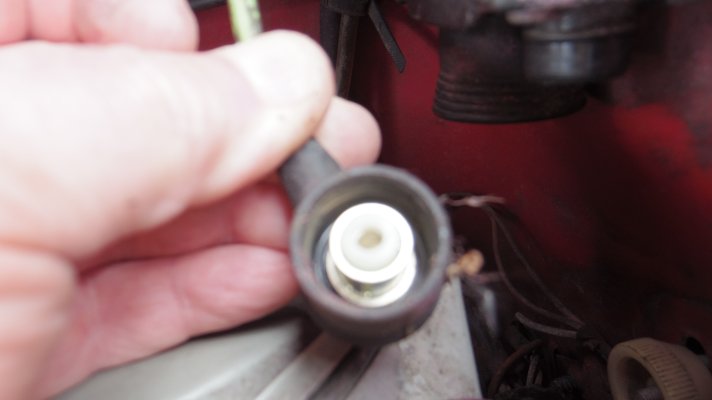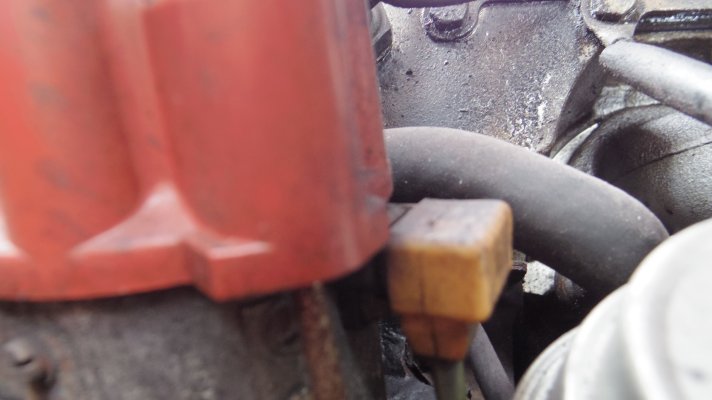gassygassy
Member
I had a 2006 Volvo V70 for a short while which incurred several thousand pounds down the drain to incompetent garages mis-diagnosing faults, doing what The Diagnostic Computer told them instead of having two brain cells to fix the real problem.
So it got dumped in favour of a lovely restored ?1983 -the VIN says it was manufactured 1981 - W123 2.0 petrol which has no computers, in fact hardly any electronics that Faraday would have difficulty understanding. I suspect it is actually 1981 as the fan heater blower motor is at the top centre of the dash, not above a footwell.
I drove it for several hundred miles and it went just fine and dandy until today when it suddenly coughed and spluttered just as I entered a long dual carriageway. I managed to stutter to a layby when I looked for an electrical fault under the bonnet. I couldn't find any loose wires. I removed the HT coil low voltage leads and measured the various resistances. The HT terminal to earth or either of the LT terminals was about 10k ohms. The LT coil seemed to be about 2 ohms which I think is what it should be. I am suspicious that the coil might be on the way out. Years ago when I did mobile car servicing, and having been an electronics engineer I found that HT coil windings tend to break down their winding resistance with age. A new one is about 18k ohms and when they get down to 11k, the voltage produced starts this symptom that I have, intermittent firing.
Having pulled into the layby, removed the wires, measured the resistances and replaced the wires the car went correctly, for about 25 miles when it started misfiring again. I don't mean going bang, I mean just not firing at all when it should. Again I pulled over and this time I looked inside the distributor cap and found to my surprise there are no points, instead a hall effect sensor and rotating steel 'cross' which pulses the sensor at each ignition point. All seemed well so I replaced the cap and off I went and got home OK.
So I have diagnosed that the HT coil needs replacing. I have a question: is it a straight 12v coil or does it have a ballast resistor, and if so where would I find it? I didn't see one when I was under the bonnet.
Were some of them straight 12v coils or did all of them have a ballast resistor? Ford, in case you didn't know introduced 10v coils in about 1970, and dropped the supply voltage when running by using a resistive 'wire' made of string impregnated with carbon. The carbon would bunch up into islands and cause misfiring. Typical Ford disgusting build quality.
So it got dumped in favour of a lovely restored ?1983 -the VIN says it was manufactured 1981 - W123 2.0 petrol which has no computers, in fact hardly any electronics that Faraday would have difficulty understanding. I suspect it is actually 1981 as the fan heater blower motor is at the top centre of the dash, not above a footwell.
I drove it for several hundred miles and it went just fine and dandy until today when it suddenly coughed and spluttered just as I entered a long dual carriageway. I managed to stutter to a layby when I looked for an electrical fault under the bonnet. I couldn't find any loose wires. I removed the HT coil low voltage leads and measured the various resistances. The HT terminal to earth or either of the LT terminals was about 10k ohms. The LT coil seemed to be about 2 ohms which I think is what it should be. I am suspicious that the coil might be on the way out. Years ago when I did mobile car servicing, and having been an electronics engineer I found that HT coil windings tend to break down their winding resistance with age. A new one is about 18k ohms and when they get down to 11k, the voltage produced starts this symptom that I have, intermittent firing.
Having pulled into the layby, removed the wires, measured the resistances and replaced the wires the car went correctly, for about 25 miles when it started misfiring again. I don't mean going bang, I mean just not firing at all when it should. Again I pulled over and this time I looked inside the distributor cap and found to my surprise there are no points, instead a hall effect sensor and rotating steel 'cross' which pulses the sensor at each ignition point. All seemed well so I replaced the cap and off I went and got home OK.
So I have diagnosed that the HT coil needs replacing. I have a question: is it a straight 12v coil or does it have a ballast resistor, and if so where would I find it? I didn't see one when I was under the bonnet.
Were some of them straight 12v coils or did all of them have a ballast resistor? Ford, in case you didn't know introduced 10v coils in about 1970, and dropped the supply voltage when running by using a resistive 'wire' made of string impregnated with carbon. The carbon would bunch up into islands and cause misfiring. Typical Ford disgusting build quality.




